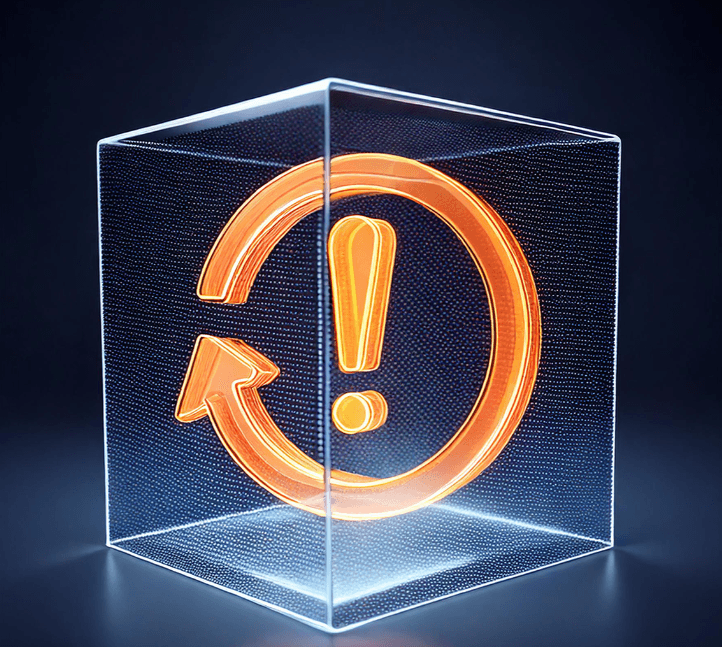A Guide to Cyber Recovery Cleanrooms
By Emily Davidson
18 November 2024At Celerity, we’re committed to helping organisations navigate the complexities of emerging technologies that drive resilience and compliance. That’s why we’re excited to share this insightful article from our partner, Predatar. Written by CEO Alistair Mackenzie, it explores the growing importance of cyber recovery cleanrooms, their benefits, and how to cut through the noise to make informed decisions.
Cyber recovery cleanrooms are quickly becoming essential for any business concerned about their operational resilience. The new generation of cleanroom technology can prove your recoverability, enhance your data integrity, improve your incident response – and help you achieve regulatory compliance.
As is often the case with emerging technologies, every storage and backup vendor has its own approach, and unfortunately, there seems to be a certain amount of “cleanroom washing” to go with the hype. This is making the evaluation of solutions difficult and making buying decisions complicated and expensive.
This article by Predatar’s CEO Alistair Mackenzie will explain the benefits of cleanrooms. It will help you navigate the complexities of this emerging marketplace, and ultimately make better buying decisions.
1. An introduction to Cleanrooms
If you think a ‘cleanroom’ is only called on in exceptional, post-cyberattack scenarios, I’ve got news for you. The game has changed. Today, cleanrooms are so much more.
Where once, cleanrooms were used specifically for forensic analysis during the response and recovery phases of a cyber incident, today’s emerging cleanroom technology is making them an essential component for any data backup and storage system.
Today’s cleanrooms are powerful, proactive tools that you can put to work 24/7 to detect threats, test your recovery and boost your resilience.
2. The benefits of cleanrooms for Data Recovery and Data Security
2.1 Disaster recovery planning and governance
Whilst cleanrooms may have been a consideration in DR planning for some time, it would typically be in the context of how to provision one, when (or if) one was required.
As recognition has grown amongst IT and security leaders that recovery from snapshots and traditional backup copies is critical for disaster recovery and business continuity, so has the recognition that validation of these important workloads is falling well short of what is needed.
The truth is, very few storage experts can tell you with certainty how long a system will take to restore from backup, if it will restore at all, or whether it is safe to do so.
To answer these questions, IT leaders are searching for reliable, cost effective ways to conduct proactive recovery testing. The increasing drumbeat of regulations such as NIS2 and DORA in the EU, and FISMA in the USA is accelerating this search for answers.
The solution lies in the new generation of cleanroom technology that is emerging. It promises to revolutionise the expectations of storage and backup teams to guarantee rapid, and secure system recovery in the event of a cyberattack (or any other data-loss incident).
2.2 Security enhancements
Investing in a ‘just-in-case’ cleanroom is a luxury that few companies can afford, especially when storage and backup is viewed just through the lens of response and recovery.
It is worth therefore clarifying the possible use cases of cleanroom systems – both reactive and proactive.
- We’ve already touched on the first use case – the temporary running of production machines in a safe environment. The main reason for this is post-attack validation of the system’s integrity and cleanliness.
- Many organisations also use cleanrooms proactively (albeit on a one-off or occasional basis) to help them design their Business Continuity Plans (BCPs) and Disaster Recovery (DR) plans.
- The third, and newest use case turns cleanrooms into a proactive threat-detection tool and puts backup data to work to boost security posture.
This third use case is rapidly becoming the most important, and is changing the way security leaders view storage and backup systems. So, what is driving this change?
At the time of writing, 74% of organisations who have deployed Predatar Cyber Recovery Orchestration have found unwanted files in their backup systems, despite running best of breed XDR tools on production systems. The ability to detect long-cycle cyber activity using the historical nature of backup data is helping to promote backup beyond response and recovery.

This third use case, allows cleanrooms to contribute to more stages of the NIST 2.0 security framework. As such, cleanrooms are no longer an expensive luxury. They are becoming a valuable and cost-effective operational asset.
3. Key criteria for selecting a cyber recovery cleanroom system
3.1 Ease of deployment
A cleanroom needs to be quick to deploy, ideally in a few hours. Unfortunately, most cleanrooms on the market today are little more than design blueprints and reference architectures. The last thing you want when your business is down and the pressure is on, is to start building your cleanroom from an instruction manual. You simply can’t afford days (or maybe weeks) of additional downtime while you setup your isolated recovery environment.
That said, if you have the time and skills to build your own cleanroom then blueprint documentation is a good place to start. An example of this can be found on IBM’s support webpage IBM Storage Defender: Cleanroom environments …just don’t wait for a crisis to get started!
3.2 Ease of use
If you plan to use your cleanroom to run proactive recovery testing schedules every day, then it needs to be serviceable. The recovery testing process needs to be fully automated – because few storage teams have the time or resources to do manual restore testing every day.
Your solution should be intelligent too – with the ability to respond to changes in storage or backup behaviour. For larger enterprises it should be capable of prioritisation, so that serious anomalies can be investigated quickly.
3.2 Cost considerations
The general expectation when speaking with IT leaders is that cyber recovery cleanrooms are expensive to build, and expensive to operate. This may have been true in the past, when the price tag was driven by the high-stakes scenarios where cleanrooms where often acquired. Today’s cleanrooms can be built quickly with commodity components. As a result, the cost has come down significantly.
The first generation of cleanrooms were based on proprietary technology and often only available as part of a vendor’s larger, more expensive cyber vault solution. At this point it’s worth noting the basic difference between a cyber vault and a cyber recovery cleanroom.
- A cyber vault is used for storing an isolated, or air-gapped immutable copy of data. Good examples of cyber vaults include the Dell PowerProtect Cyber Vault, the HPE Zerto Cyber Resilience Vault, or for primary data storage on System Z, IBM has the IBM Z Cyber Vault. Cyber vault solutions can be extremely expensive because of their bespoke and proprietary nature. Prices typically start in the hundreds of thousands of dollars growing to millions for larger organisations.
- A cyber recovery cleanroom on the other hand, provides a safe target environment with which to perform restore testing and security analysis of the restored data. A rule of thumb for third generation cleanroom technology is it should cost around 10-15% of the purchase price of your data backup solution. A cleanroom can be installed in just a few hours, and should include integrated XDR scanning tools.
Vaults and cleanrooms can be combined to bring the security fundamentals of immutability, air gaps and recovery testing into one solution. For more information on these fundamentals, read the Predatar Recovery Gap eBook, available here.

3.3 Integration with cyber resilient backup and storage vendors
A current trend for cyber security is platformisation. By consolidating tools and data into a single platform, organisations can reduce costs, streamline operations, and improve threat detection and response. The same trend will apply to cyber resilience, and given the multi-vendor nature of data storage; security officers will not want siloes across their cyber resilience architecture.
A typical infrastructure estate will have one vendor for mainframe, another for open system block storage and still another for file storage. This is also true for secondary storage.
Companies also typically change their storage supplier every five years or so. These are time-consuming projects, and if cyber resiliency tooling also hads to be changed every time the underlying storage was replaced, the decision-making would be even more difficult.
If you have a heterogenous storage and backup environment, you need cleanroom technology which is vendor agnostic. At Predatar, we’ve developed a SaaS control plane which can adapt to the underlying storage and backup products. Predatar is the only solution on the market today which supports IBM, Pure, Veeam, Rubrik and Cohesity.
3.4 Hybrid cloud workload support
Whilst it might be true that the attack surface is larger for windows and virtual machines; in DR planning, UNIX systems are often the priority. Security experts often talk about security posture, accepting and recognising the need to identify gaps in their defence. Automated and scheduled recovery testing must be made easy not just for VMware virtual machines, but also for bare metal, file servers, different hypervisors, and UNIX workloads. Until recently, this would require the purchase of multiple solutions. Whether you are testing your recoverability, or responding to a cyber event, do you really want to be juggling with point products?
This is an ongoing mission for the Predatar team. The latest release, R17 Viper, extends support from VMware to Hyper-V and Nutanix AHV hypervisors, with AIX support just around the corner.
3.5 Security and Access Controls
When evaluating a cyber recovery cleanroom, security and access controls are essential to maintain data integrity and prevent unauthorised access during recovery operations. To ensure a secure and isolated recovery environment, key considerations include a rigid deployment configuration and layered isolation architecture.
A well-designed cleanroom should use appliance-level isolation as the first security layer. This includes strictly controlled firewall rules, allowing only essential, pre-defined communication channels, and a restricted command pathway. Such an arrangement minimises interaction with production systems, preserving the integrity of the recovery environment while preventing malware contamination or unauthorized access.
The second layer, machine-level isolation, applies stringent security standards to the machines restored within the cleanroom. Automated network isolation, such as disabling network interfaces upon recovery, can be valuable in containing any potential malware. Furthermore, comprehensive malware scanning and data verification should be performed on each machine, ensuring a safe and reliable testing environment for data integrity.
These dual isolation layers, coupled with tightly managed firewall configurations and controlled virus definition updates, create a strong perimeter around the cleanroom. A prescriptive setup, which limits deployment flexibility, allows for consistency across environments, helping organisations ensure that recovery testing and operations are conducted securely without compromising production systems.

3.6 Reporting Capabilities
As cleanroom adoption grows, Chief Information Security Officers (CISO) will expect critical reporting and metrics to ensure comprehensive data storage and backup recovery readiness. As a minimum, key metrics including backup validation percentage must be monitored to ensure that all backups are complete and uncorrupted. Recovery point objectives (RPOs) and recovery time objectives (RTOs) are also essential; these track how frequently data is backed up and the expected time for recovery, ensuring minimal downtime and data loss in case of an incident.
With growing capability, we believe the CISO will want to see proof that backups have been fully scanned with best-of-breed XDR tools. Scanning backups for anomalies is useful, but it’s not a replacement for a deep malware scan. Only full scanning can detect dormant threats. Behaviour-based scanning will only detect anomalies caused by active threats in backup, when it’s already too late.
The CISO would also prioritise audit trails and compliance reports to verify adherence to regulatory standards, crucial for highly regulated industries.
3.7 Deployment options
Cyber recovery cleanroom deployment options vary based on an organisation’s security, accessibility, and compliance needs. Cleanrooms can be installed on either shared or dedicated infrastructure. Shared infrastructure allows organisations to utilise resources more efficiently, often reducing costs, but may limit control over the environment and security protocols. Dedicated infrastructure, on the other hand, provides exclusive access and stricter security, making it ideal for industries with high regulatory standards or sensitive data.
Proximity to the backup or storage system is critical for cleanroom deployment, as frequent restore testing requires minimal latency. Thus, many organisations opt for an on-premises cleanroom close to the backup systems. This setup ensures optimal speed and performance, especially crucial for frequent data verification and recovery tests.
However, advancements in cloud technology make the cloud a feasible alternative for cleanroom deployment, particularly for organisations with significant remote or distributed operations. A cloud-based cleanroom provides flexibility and scalability, allowing organisations to manage recovery efforts with remote access and on-demand resources. With robust access controls, encryption, and continuous monitoring, a cloud environment can serve as a secure, compliant option for cyber recovery, offering the added advantage of geographic redundancy for disaster recovery.
4. Cleanroom vendor evaluation checklist
4.1 Key Questions to ask vendors
How does your cleanroom solution facilitate regular backup and restore validation and proactive threat detection?
Look for capabilities in anomaly detection, XDR integration, and automated recovery testing to maintain robust operational security.
–
Is your solution compatible with diverse storage and backup environments, and how does it support multi-vendor integration?
Seek a vendor-agnostic solution that can easily adapt to various storage infrastructures to ensure flexibility and resilience over time.
–
What deployment options do you offer (on-premises, cloud-based, or hybrid), and how do they address latency requirements and compliance standards?
Ensure the cleanroom’s setup aligns with proximity needs, regulatory compliance, and preferred infrastructure to minimise downtime.
–
What automated features are included for recovery testing, reporting, and maintenance, and how customisable are these functions?
Prioritise ease of use and serviceability, with options for custom reporting and automatic anomaly response.
–
How does your cleanroom solution help us meet new regulatory requirements such as NIS2 or DORA, and what metrics does it track to prove compliance?
Look for a solution that tracks recovery metrics, maintains audit trails, and offers comprehensive reporting aligned with compliance standards.
–
5. Conclusion
Cleanrooms, once seen as a post-crisis measure, have evolved into proactive assets, enabling companies to regularly validate backup integrity and detect threats before they escalate.
When selecting a cyber recovery cleanroom solution, companies need to prioritise a technology that not only meets today’s data recovery and security standards but also future proofs their business continuity and disaster recovery strategies. With considerations from ease of deployment and cost efficiency, to vendor compatibility and deployment flexibility, modern cleanrooms offer robust support for both compliance and operational resilience.
Cleanroom systems vary widely, and nearly every backup and storage vendor has one in their portfolio. Choosing the right one depends on what data storage technology is currently used, budget, and any security considerations around deployment. By prioritising user-friendly, serviceable, and automated solutions that integrate within a diverse storage and backup environment, organisations can achieve a significant step-up in security posture. In today’s increasingly regulated environment, a cyber recovery clean room provides value by aligning with frameworks such as NIST 2.0, offering advanced threat detection, and facilitating regular recovery testing.
In a dynamic security landscape, investing in a high-quality cleanroom solution strengthens a company’s resilience, helping you meet both present and future demands for data security and disaster recovery.
If you’re ready to discover more about proactive recovery assurance with a cyber recovery cleanroom visit www.predatar.com
Latest resources

A Guide to Cyber Recovery Cleanrooms
At Celerity, we’re committed to helping organisations navigate the complexities of emerging technologies that drive resilience and compliance. That’s why we’re excited to share this insightful article from our partner, Predatar. Written by CEO Alistair Mackenzie, it explores the growing importance of cyber recovery cleanrooms, their benefits, and how to cut through the noise to make informed decisions.

Celerity Secures Spot on Crown Commercial Service G-Cloud 14 Framework to Drive Public Sector Digital Transformation
Celerity is delighted to have been named as a supplier on the Crown Commercial Service (CCS) G-Cloud framework, with the latest iteration, G-Cloud 14, commencing on 9th November 2024 and running through April 2026.

Play your virtualisation cards right with Red Hat OpenShift
If you’re the customer of one very large virtualisation vendor, you may feel like you’ve been dealt a pretty bad hand over the last few months. With the long-term impact of new licensing and support programmes up in the air, organisations are seeking guidance from IT service providers on how they can best plan for, and manage, their virtualised infrastructure going forward.